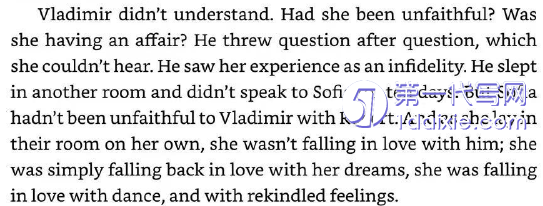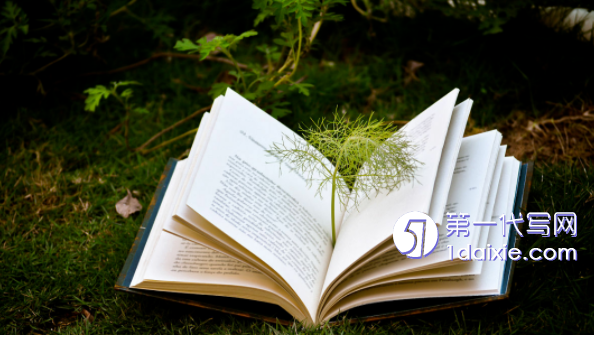本文是一篇英语毕业论文,实践证明,变译理论对《舞蹈疗法》的翻译具有指导意义。在变译理论的指导下,翻译过程中大量繁杂的专业术语、详尽严谨的数据调查以及个人感情色彩较重的语言表达等难点得以解决。
Chapter 1 Task Description
1.1 Selection of the Source Text
The translator chooses the book The Dance Cure as material for translation for threereasons.First of all,since 2022,the Ministry of Education has issued a series ofdocuments such as“Compulsory Education Curriculum Plan and Curriculum Standards”and“Graduate Education Discipline Professional Catalog”indicating that:in the stage ofcompulsory education,dance is officially included in the new curriculum standard of theMinistry of Education in 2022.At the stage of postgraduate education,dance is classifiedas a first-level subject(Tae,2012).Therefore,it is imperative to popularize theknowledge of dance and promote the development of the art of dance.
Secondly,the concept of“dance cure”has gradually attracted public attention.Dance therapists believe that through dance,this form of movement can not only correctpeople’s maladaptive movement,posture and breathing,but also safely release emotionssuch as anxiety,anger,sadness and depression lurking deep in the heart,so that peoplefeel their ability to control their personal existence.“Dance cure”can therefore be animportant means of promoting physical and mental health,and the selection of this bookas translation material has certain practical significance.
Finally,the translator has the experience of professional study and training in dance,and has deep knowledge and experience of dance.This helps the translator to understandthe source text,thus improving the quality of this translation practice.The purpose of thistranslation practice is to transfer the knowledge of“dance cure”to China and call onmore people to improve their physical and mental health.
1.2 Analysis of the Source Text
This part introduces the contents and features of the source text.Analyzing thecontent of the source text makes the translator comprehend the text,and analyzing thefeatures of the text can improve the quality of translation.

1.2.1 Introduction to the source text
The Dance Cure,written by Dr.Peter Lovatt,consists of 6 chapters and 195 pages.The book begins with the author’s own experience,brings out the focus of the topic,thendescribes the relationship between dance and the brain,analyses the factors that preventpeople from dancing and proposes ten“dance cures”.The aim of the book is to talk aboutthe relationship between dance movement and the body and mind,and most importantly,to urge the public to improve their health through dance.The translator has selectedchapters 5 and 6 of the book for translation.
Chapter 5 analyses the factors that prevent people from dancing:dancing andself-esteem,chorophobia,having the wrong body,age and motivation.Firstly,the authorconducts a survey on dance self-evaluation and others’evaluation,which proves thatpeople’s dancing condition is affected by self-evaluation and others’evaluation;secondly,the author introduces the phenomenon of“chorophobia”and describes his efforts toeliminate it;thirdly,the factor of“the wrong body”mainly describes how people’s bodychanges due to various reasons affecting their dancing,for example,obesity due toageing will reduce confidence in dancing;fourthly,the author describes the attitudes ofdifferent genders towards dancing at different ages and analyses the changes in thebarriers to dancing that people encounter at different ages;
Chapter 2 Theoretical Framework
2.1 Introduction of Variational Translation Theory
Variational translation theory is a scientific principle and ideological system thatreflects the nature and regulations of adaptation,which is summarized from practice.Ittakes adaptation as its research object,studies the general characteristics and regulationsof the adaptation process,and seeks general principles and methods that are generallysuitable for all adaptation techniques(Huang,2002b).This part introduces features ofvariational translation and seven adaptation techniques of variational translation theory.
2.1.1 Features of variational translation
Translation is a thinking and language activity in which the translator converts thesource language cultural information into the target language cultural information to meetthe specific needs of the reader(Huang,2002b).The features of variational translationcan be divided into macro and micro perspectives.Huang(2020:64)asserts that“From amacro-perspective,variational translation has four features.First,it highlights the humanelement,namely the translator and the target readers;secondly,it“betrays”completetranslation;thirdly,it has a clear attitude toward the source text,that is,a negative oraffirmative attitude;and fourthly,it makes the value of source texts more distinct andexposed to the target readers”.From the micro point of view,the essential feature isspecial contradiction,which is manifested in six progressive levels closely related tovariational translation:adaptation for readers,adaptation by the translator,adaptation of the original work,the strategy of ingestion,the methods of adaptation and theintensification of information(Huang,2020).
2.2 Origin and Development of Variational Translation Theory
The logic of variational translation theory is as follows:describing Yan Fu’stranslation practice,discovering the phenomenon of translation variation,putting forwardthe concept of“variational translation”,reconstructing the view of translation,andputting forward a pair of terms“translation variation and complete translation”(Shao,2022).The origin and development of variational translation theory has gone through the following four stages:
The first stage is the germination of the concept of variational translation.In 1995,atthe Fifth National Symposium on Scientific and Technological Translation held inChengdu,Huang Zhonglian read out Prospect of Scientific and TechnologicalTranslation in China in the 21st Century.The focus of the“countermeasures”section ofthis paper was“strengthening the research on the development of scientific andtechnological information abroad”.This practice raises the translation of foreigndocuments from the level of“transmission”to the level of“creation”,that is,changes thecontent and form of the original information.In recent years,due to the change of societyand the progress of thought,adding,deleting,editing and narrating are often adopted inthe translation field of society,and the whole text is rarely translated word-to-word.However,this common translation phenomenon was not recognized by the public,enough to see that the concept of variation was still in its infancy at that time.
Chapter 3 Translation Process .............................. 10
3.1 Pre-translation Preparation ............................ 10
3.1.1 Reading the source text .................................... 10
3.1.2 Consulting the parallel texts ................................. 11
Chapter 4 Case Analysis ................................... 14
4.1 Adding .................................... 14
4.2 Deleting ................................... 18
4.3 Editing ................................. 20
Chapter 5 Conclusion ................................ 35
5.1 Major Findings ..................................... 35
5.2 Limitations .......................................... 35
Chapter 4 Case Analysis
4.1 Adding Adding means that the increase of information compared with the source text,including three ways of explanation(to explain a part of the source text in a translatedtext),commentary(to criticize or comment on what has been translated)and writing(tofill in the content related to the translated part)(Huang,2002a).Addition of words,alsoknown as supplementation,refers to the addition of some words in the translation thathave their own meaning although they do not have their own words in the source text,soas to express the ideological content of the source text more faithfully and smoothly.Thistechnique is different from“amplification”,which refers to the addition of an element orthing to an existing element or thing,whereas the other refers to the amplification orenhancement of an existing element or thing(Erlina,2021).Deng(2022:5)asserts“It isan authentic domestication method to meet the needs of specific readers at specific levels.The most fundamental and common change in translation is the change of content”.Dueto the different ways of expression between English and Chinese,it is often necessary to increase the number of words in the target language,so that the target language canfaithfully convey the content and style of the source language and conform to theexpression habits of the target language.
Example 1:
[ST]:Her son had grown up and moved on and Vladimir a musician took no interest indance,so Sofia joined a social-dance class.(see Appendix A,p.48)
[TT]:如今她的儿子长大了,有了自己的生活,而身为音乐家的丈夫对舞蹈却不感兴趣,家里没有和她志同道合的人了,于是索菲亚参加了一个交际舞舞蹈班。(see Appendix B,p.95)

Chapter 5 Conclusion
5.1 Major Findings
This translation practice is completed under the guidance of variational translationtheory with The Dance Cure as the translation material.Through this translation practice,the translator has gained a deeper understanding of this theory and has become moreskilled in its application,and has also realized that the theory has a guiding role in thetranslation practice of this kind of text,which can also provide new insights for theresearch and practice in related fields.
The essence of the variational translation theory lies in“variation”,which is inessence the translator’s activity of taking in the relevant contents of the original work bytechniques of variation according to the special needs of the specific readers underspecific conditions,so as to achieve a better conveying effect.The book The Dance Curecontains a lot of dance terminologies,which are difficult for non-professionals tounderstand;secondly,it also involves elements such as physical expression,emotionaltransmission and psychological rehabilitation,which are often too abstract in the sourcetext.The flexibility and openness of this theory provides the translator with more spacefor creativity and exploration,and she adopts four kinds of techniques,namely,adding,deleting,editing and narrating,to present the complex information and the author’s innerfeelings in the source text.Through the case analysis,we can see that variationaltranslation theory is of guiding significance to the translation practice.
reference(omitted)
